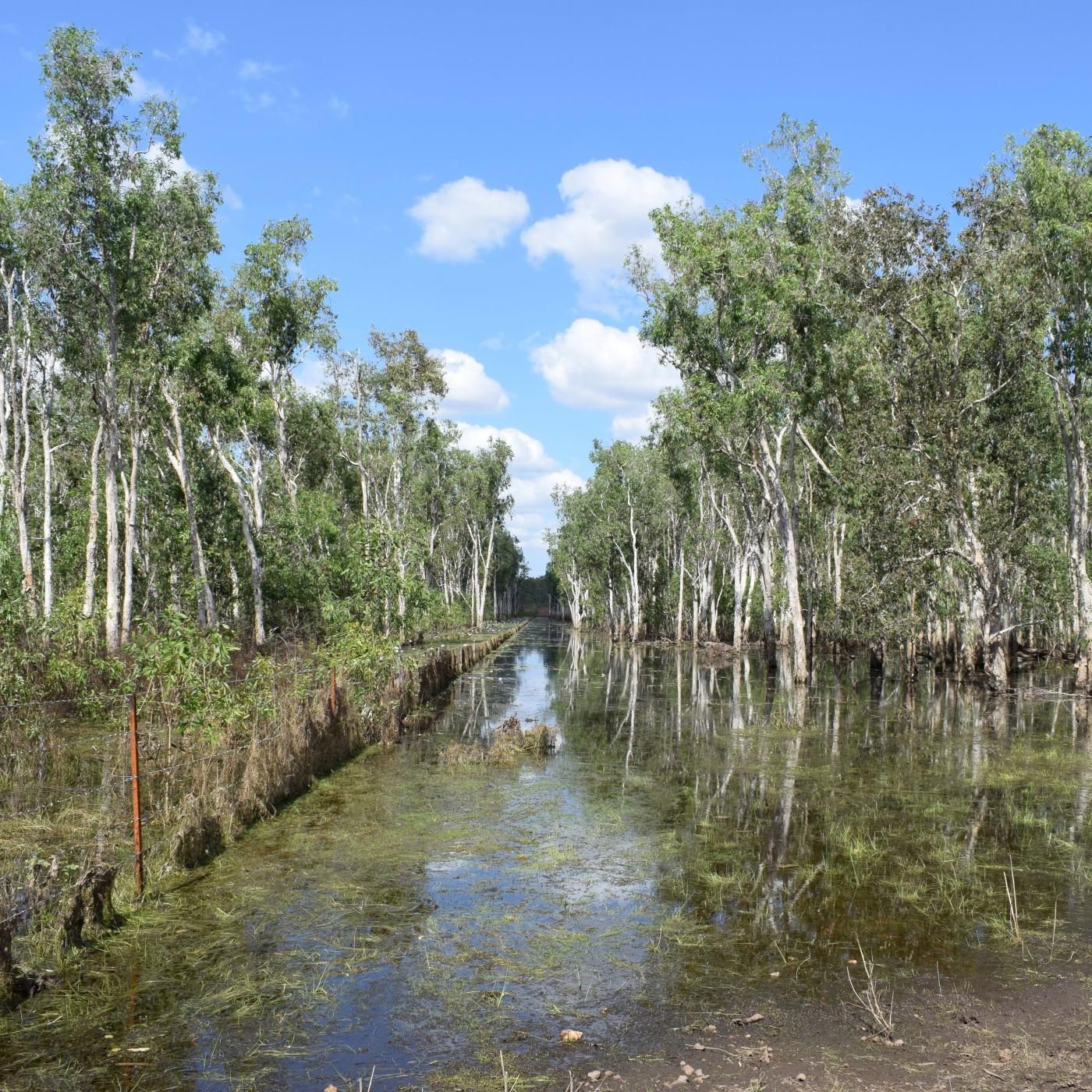The Aboriginal Areas Protection Authority oversees the protection of sacred sites in the Northern Territory.
Whilst protecting Aboriginal sacred sites is the responsibility of all Australians, only Aboriginal custodians can set out what is required to preserve the sanctity of a site.
Under the NT Aboriginal Sacred Sites Act, the Authority consults with Aboriginal custodians to ensure they are fully informed about development, and to ensure land users and developers are given clear conditions regarding proposed work in the vicinity of sacred sites.
Through the work of the Authority, developers can have confidence to proceed with investment.
The Authority cannot and does not authorise the destruction of sacred sites.
Primarily AAPA protects sacred sites by:
- Maintaining records of identified sacred sites in the Northern Territory, and providing information to the public.
- Issuing Authority Certificates, which set out the conditions by which work can proceed on and around sacred sites.
- Investigating and prosecuting offences against sacred sites.

Request for information
In accordance with the NT Aboriginal Sacred Sites Act, the Aboriginal Areas Protection Authority maintains records of all sites that it has identified in the Northern Territory.
The ‘Request for Information’ service makes available the sacred site records that may exist for an area of interest. It is not a definitive way of determining the location of all sacred sites in a given area and only indicates sacred sites currently known to the AAPA.
The sites that are listed in the Records fall into two main categories:
Registered Sites – these are sacred sites that Aboriginal custodians have asked the AAPA to protect and that have been comprehensively documented and evaluated by the AAPA. Registered sites include information on locations and boundaries. These make up the Register of Sacred Sites.
Recorded Sites – these are sacred sites that have been made known to the AAPA from a variety of sources. In many cases the AAPA has not been able to assess the information regarding recorded sites, nor have these sites been fully mapped.
It is recommended that the public use the ‘Request for Information’ process during the preliminary planning stage of a project and seek an Authority Certificate prior to commencing works.

Authority Certificates
Anyone proposing to use or work on land in the Northern Territory may apply for an Authority Certificate to cover their proposed activities.
An Authority Certificate is based on consultations with Aboriginal custodians and sets out clear conditions explaining what can and cannot be done in and around sacred sites. The existence of a sacred site does not necessarily mean that entry or works on or near the site are prohibited, but there may be specific restrictions to protect the sacred site.
Every Authority Certificate requires background research and extensive field work, consultations, assessment and analysis.
An Authority Certificate is a legal document issued under the Sacred Sites Act.
The Certificate gives developers a defence against prosecution in relation to sacred site damage from the specified works or activity, if the applicant complies with the conditions imposed under the Authority Certificate.
Authority Certificates are a requirement for all regulated activities under the Petroleum (Environment) Regulations Act 2016 (NT), prior to Ministerial approval of an Environmental Management Plan for that activity.
For all other land use, Authority Certificates are voluntary but they are an effective management tool for developers because they give clear guidance on where sacred sites are, and how to work alongside them. This helps prevent damage to the sacred site, which can lead to prosecution, reputational damage, project delays and extra cost.

Compliance and enforcement
All sacred sites in the Northern Territory are protected by the Sacred Sites Act, whether or not they are known to the Authority.
The Act defines sacred sites to mean any site of significance according to Aboriginal tradition, and can include places like art sites, rock formations, trees, ceremony grounds, billabongs and mountains. Sacred sites can be obvious landscape features, but they can also be inconspicuous. Some sacred sites may be places where only certain Aboriginal women or men can enter, while others might be places that anyone can visit.
The Act has a number of protections for sites, including protecting them from unauthorised entry and damage, and it gives the Authority the power to prosecute people or organisations that damage a sacred site.
The Authority has a dedicated Compliance Unit that:
- Respond to and investigate complaints about damage to sacred sites.
- Prosecute offences under the Sacred Sites Act.
- Support custodians to access sacred sites.

Register a site
Sacred site registration with AAPA enhances the protection of Aboriginal sacred sites.
Registering a sacred site establishes its status with comprehensive information that is required by law and makes it easier to prosecute any offences committed in relation to that site. It establishes the location and boundary of the sacred site, details the physical features, records the traditions that make the site sacred, and identifies the Aboriginal custodians of the sacred site. Secret and sensitive material about the site is protected and not made available to the public.
Custodians of sacred sites may apply to have their sites registered under Part III Division 2 of the Sacred Sites Act. The Authority will then conduct further research into the site to confirm the location, extent and significance of the site.
